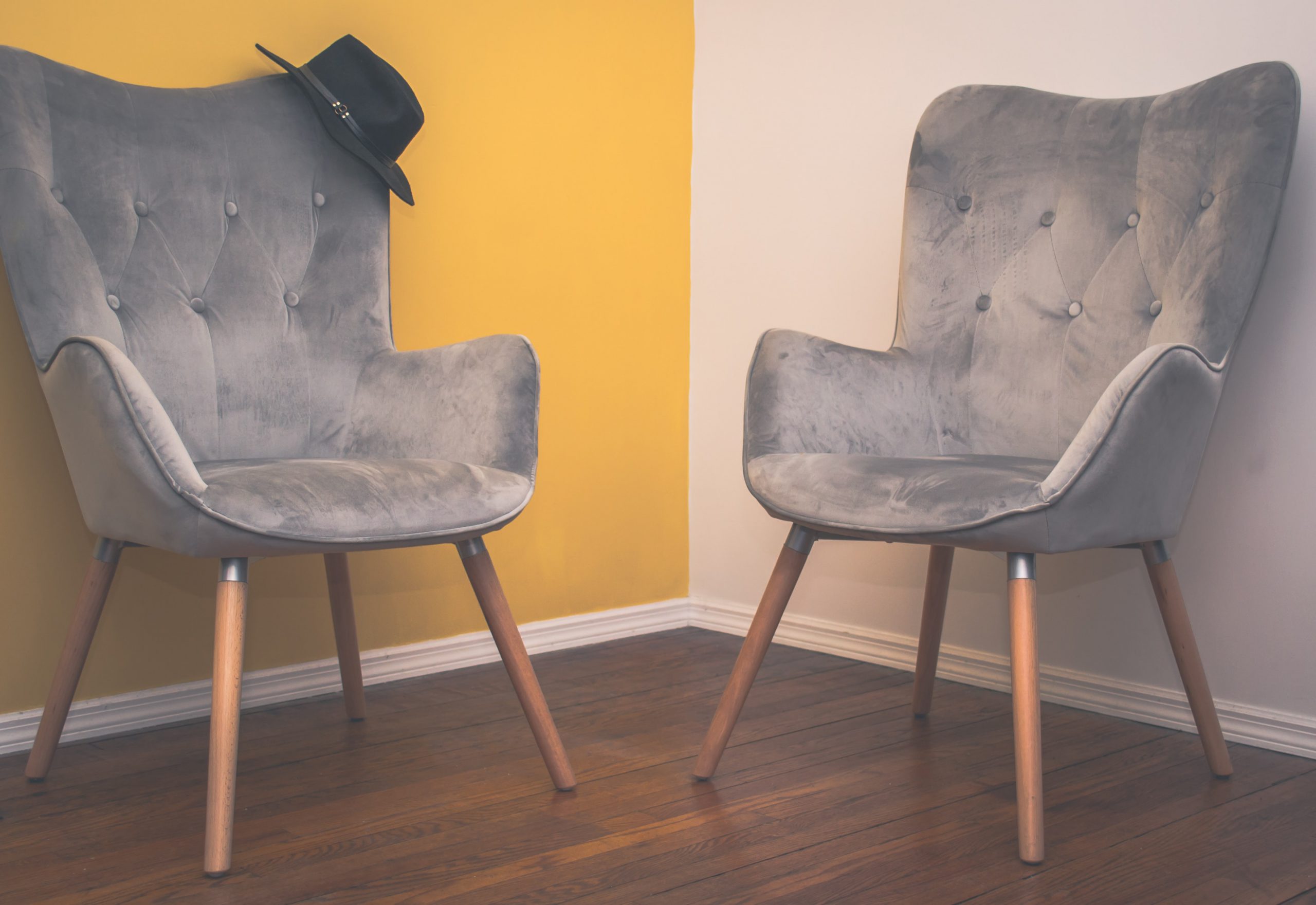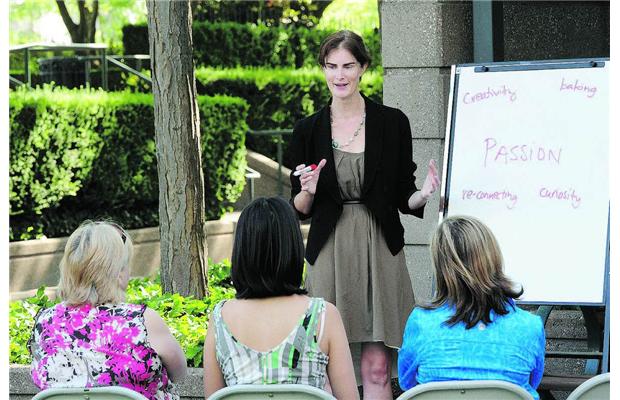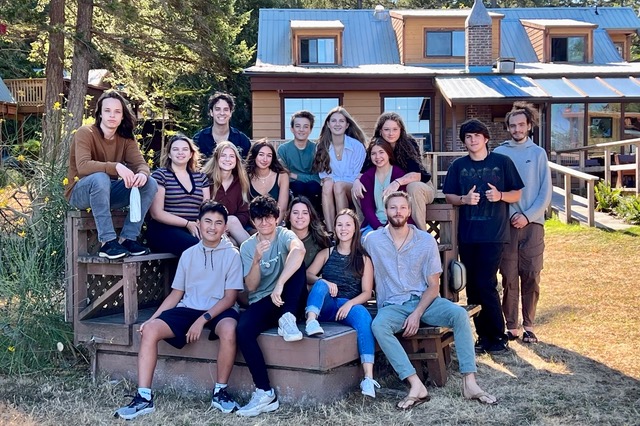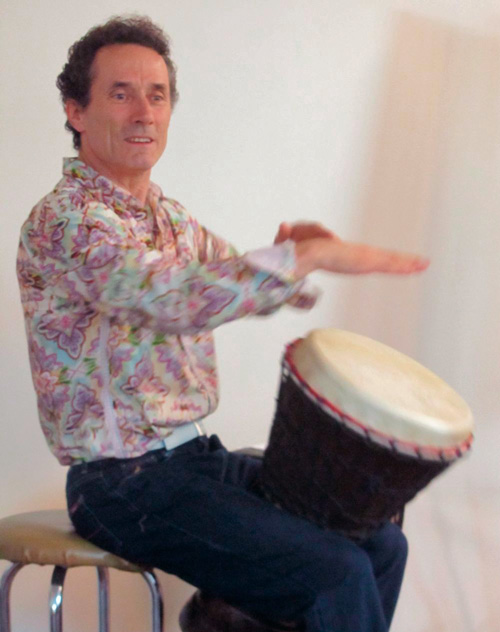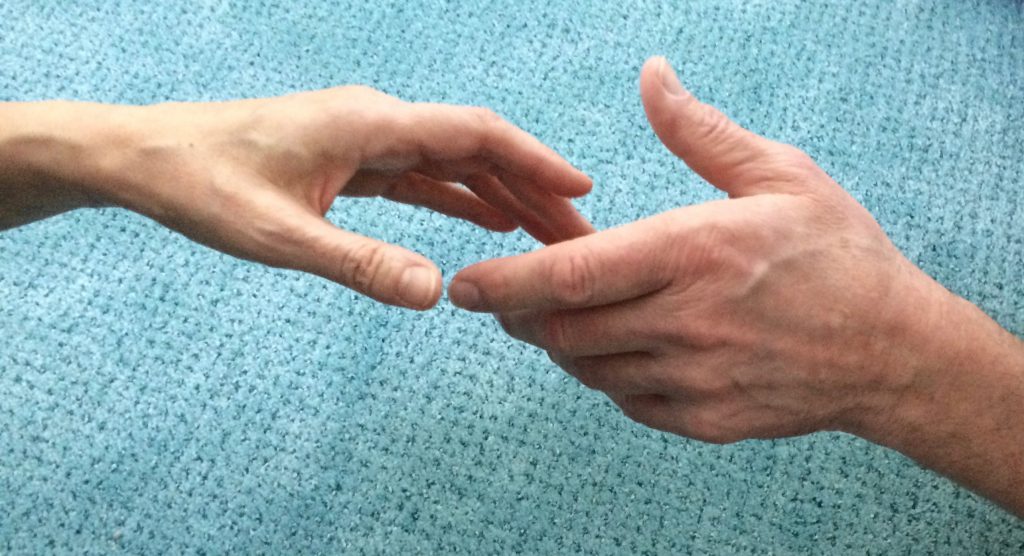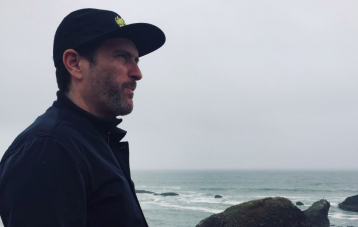6 Steps to the 2-Chair Process: Gestalt Therapy at Home
By Wayne T. Dodge MD, MPH, DipC
If you’ve been to Come Alive at The Haven, there’s a good chance you’ve participated in or witnessed some Gestalt-type work or more specifically what is called a “2-chair process.” Many participants have found profound healing and transformation with this modality.
Although I have a strong preference for work in groups – or at least with an other person – in this time of physical distancing this may not always be possible. If there is something that you’re wanting to work on and there is no immediate ‘other’ – either physically present or available through the miracle of Skype/Zoom/FaceTime etc. – the processes that we use at The Haven can still be used profitably.
The 2-chair process is a technique most often associated with Gestalt Therapy – and specifically with Fritz Perls. In this process, the client identifies a ‘name-able’ thing/other with whom they are having ‘stuck energy’. Stuck-ness is most often identified as being a problem, an attraction, an obsession, … This can be with another person (my mother, my partner, my boss, …) – or a ‘part’ of myself – (my self-hate, my anger, my fear, …) – or even an idea/concept/group … – (COVID, the Church, Republicans, …). The key is being able to ‘name’ this – and preferably with a relatively simple name. The reason for simplicity will be obvious as we proceed.
How to do a 2-chair process (in the midst of a pandemic):
The first step in 2-chair work is to confirm your intention in the work. This is a process designed to uncover, explore, further understand the dynamic that is happening (the ‘stuck-ness’ of the energy). It is NOT designed/intended to resolve, complete, solve or fix the stuck-ness. This is a possible outcome of the process, but not its intent. The ‘success’ of 2-chair work depends on avoiding focus on a specific desired outcome (as best as we’re able). The intent is to remain in ‘here-and-now’ as much as possible to discover (uncover) the ‘what-is-ness’ of what is happening.
If my firm intention is such a specific outcome – this does NOT mean that I cannot proceed – it only limits the possibilities of what can unfold. And I might wish to expend my energy elsewhere. Particularly if I have done something similar before – and are back at the same ‘starting place’; it may be that I’m actively participating in re-creating the ‘trauma’ that I’m attempting to ‘fix’. It is always your choice to proceed if you wish, but please keep in mind the definition of insanity (doing the same thing over and expecting a different outcome).
Then, if doing this on your own, you will need to keep a part of yourself ‘apart’ – as an observing ego/leader. Like any good leader, this portion of yourself may fade into the background, but if at any time the process feels too chaotic/ungrounded, the observing ego is the energy to come forward and ‘take charge.’
Then proceed to the process itself. This requires physicalizing the two ‘parts’ – ‘me’ and whatever it is that I have named – the ‘named-thing’. This will require two chairs or cushions – and the ability to move from one to the other.
6 Steps to the 2-chair process (while social distancing):
Identify and reflect on what you want to say to the ‘named -thing’ sitting across from you:
1. Breathe
This is most often focused, slightly hyper-ventilatory breathing – to ‘charge’ the process – bring more energy into the ‘here-and-now.’
2. Begin talking to the ‘named -thing/person’
Using the name, speak to it as if it were a real thing sitting in front of you.
3. Continue speaking
As long as there is ‘energy’ in the words, keep going. Once the energy starts to wane, fade, falter move on to Step 4.
4. Move over onto the other cushion.
Take several breaths to ‘energize’ and ‘become’ the ‘named -thing’. Bring the qualities/nature of the ‘named -thing’ to mind and move your body into an expression of those qualities. Then respond to what you (now the ‘named -thing’) have just heard from the ‘you’ who was sitting in the opposite chair. Continue talking as long as there is a sense of ‘energy’ in what is being said. Once that wanes/fades/falters/… Pause, and if nothing else arises, continue to Step 5.
5. Move back onto the original chair.
Breathe and reflect on what has just been said – and see if there is more to express. If so, continue back and forth until there is no more ‘movement’ of energy – or you’ve reached whatever time limit you have. End up in the first chair (that is as ‘you’, not the ‘named’ thing).
6. Breathe.
Reflect on your experience.
Hints:
- Use the name of that which is in the chair opposite you repeatedly and often. This often helps with keeping the energy alive. You can see that if you’re talking to “He-Who-Must-Not-Be-Named” and have to say that repeatedly, whatever drama is taking place often switches into comedy. So, keep the name as simple as possible.
- If energy is starting to lag, check to see if you’re still breathing actively first, before doing any switch of chair.
- If you move to an complementary process (such as physical expression of anger), make sure that it is ‘you’ and not the ‘named-thing’ doing that.
- If you’re having any difficulty with the process, remember you can always stop it by opening your eyes, focusing on something in the room and slowing your breathing. Just keep your focus on something present in the room and focus on keeping your breathing slow for a couple minutes. If there is someone else with you, even better – look into their eyes and keep your breath slowed down. Then you can look back and consider ‘where’ and ‘how’ you became ungrounded – and possibly understand more of the ‘why’. This is also valuable learning.
Be compassionate with yourself afterwards. Give yourself time to witness your work – and be witnessed by yourself – this is often the greatest time of ‘healing’ – in the understanding that can come after the official ‘process’.
About the Author:
Wayne Dodge MD, MPH, DipC has been associated with The Haven since 1981. He was the Clinical Director of an 18-practitioner Medical Clinic and administered the AIDS program for a large medical organization for 15 years. He has led Come Alive, Living Alive 1: Self Awareness, and Haven-Style Theories & Practices of Transformation (formerly: New Horizons: Phase III). With Gwen Ewan, he co-created Self-Compassion and a series of programs on Haven skills. He is a proud grandfather who is enjoying retirement and spending time in Seattle with his husband and partner of more than 30 years.

